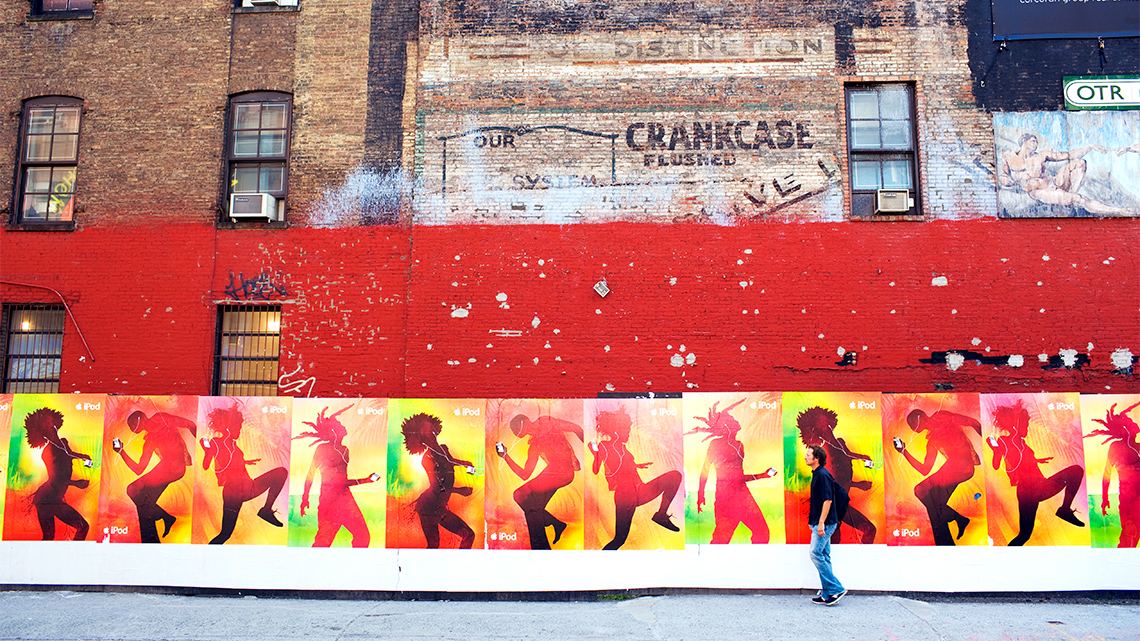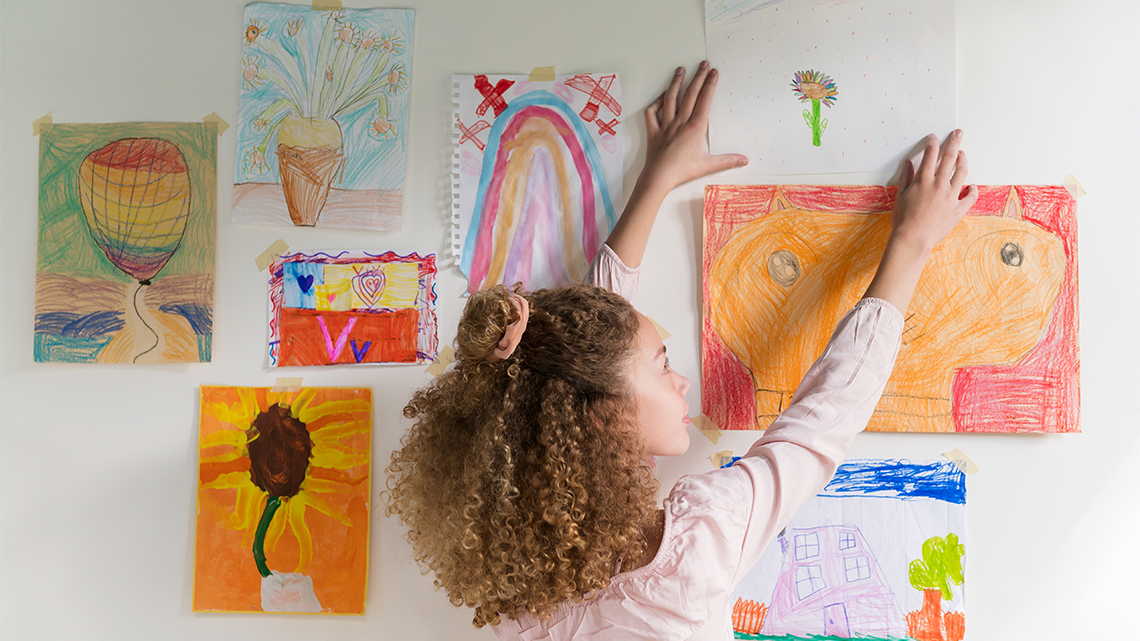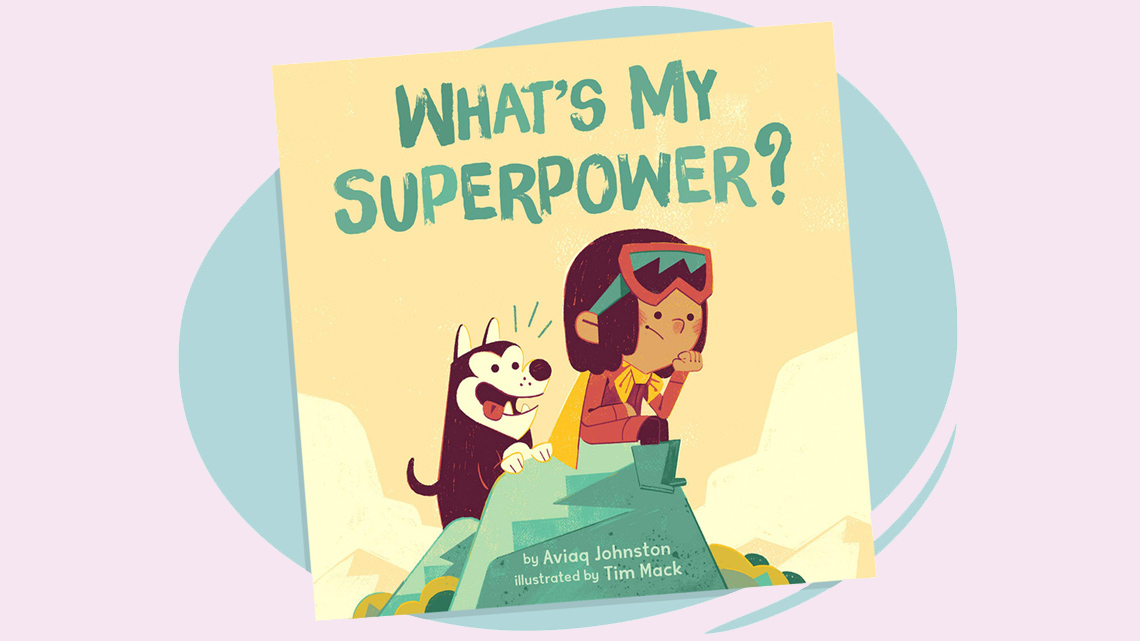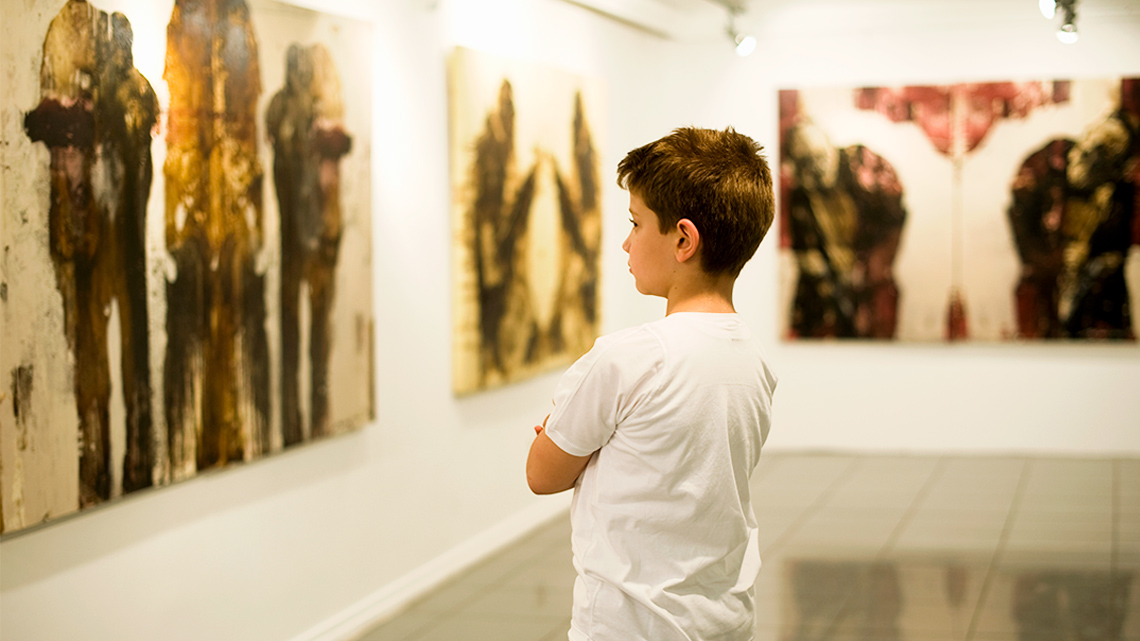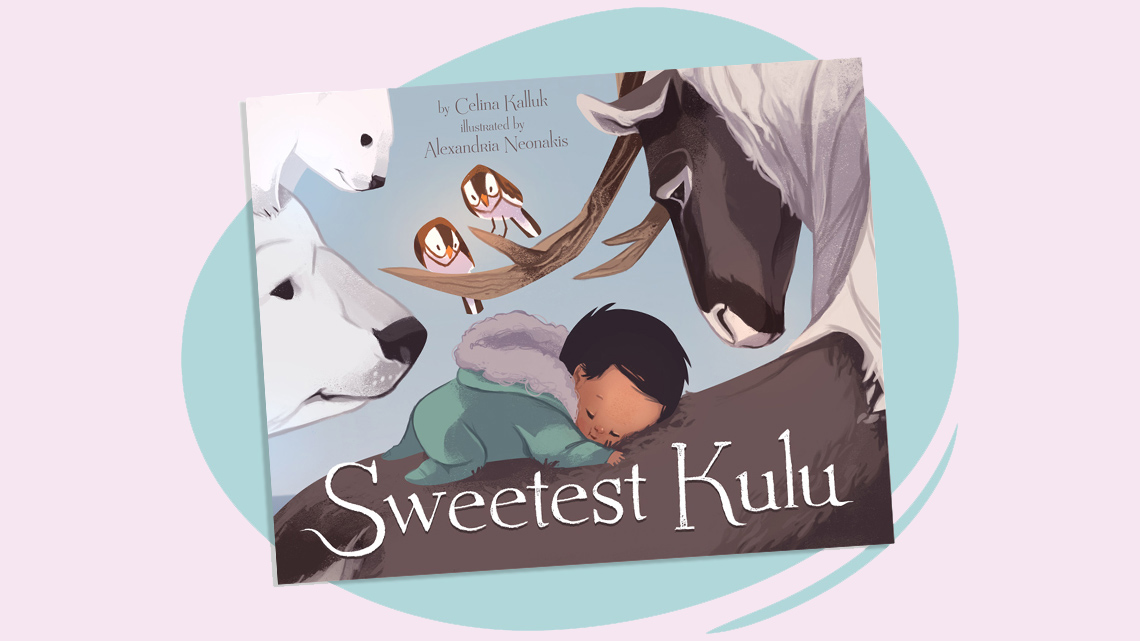Minds On
Let’s get started!
Art is created and displayed all around us. It can be found in different places and spaces within a community.
Explore the following examples of art.
Brainstorm
Brainstorm

Respond to the following questions:
- Where might you find art in your community?
- What forms of art have you experienced in your community? (for example, paintings, sculptures, murals, illustrations in books, etc.)
You may record your ideas using a method of your choice.
Action
Get ready, get set…
In the Minds On section, we explored some examples of different art forms that might be found within a community. One of those art forms is the art in storybooks. Storybooks are full of interesting and meaningful artwork called illustrations.
Press ‘Illustrations’ to reveal what this word means.
Illustrations are pictures created by an artist to help readers visualize or better understand the text they are reading. Illustrations can be found in many types of texts including storybooks.
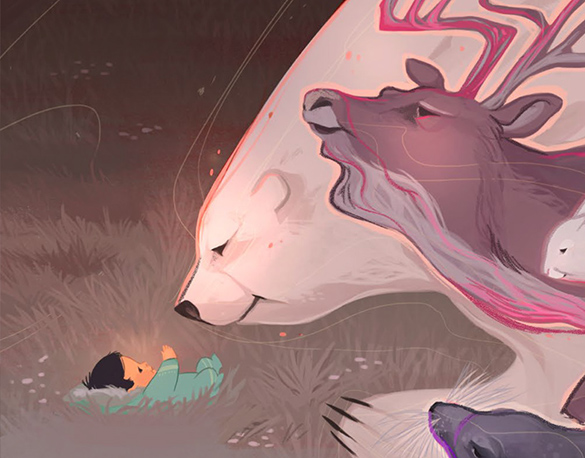
Illustrations in a storybook play an important role. The illustrations work together with the words in the book to tell the story. They help the reader to understand what is happening in the story.
Authors and illustrators play an important role in storybooks.
Press ‘Roles’ to reveal what the roles of an author and illustrator are.
Author: An author is the person who writes the words for a storybook or other forms of text.
Illustrator: The illustrator is the person who creates the pictures for a storybook or other forms of text. Each illustrator has their own specific style.
The author and the illustrator work together as a team to make sure that the words and illustrations of the story match. As a team, they bring the story together on the pages of the book.
Sweetest Kulu
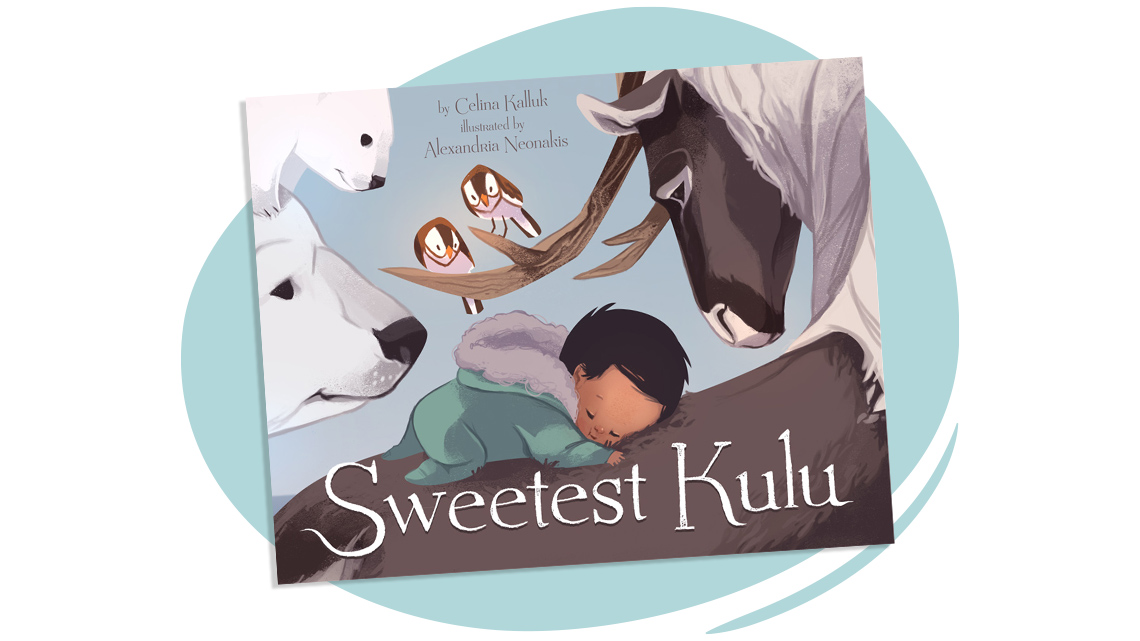
Let’s focus on a storybook called Sweetest Kulu.
The story describes how each of the Arctic animals come to greet a newborn baby and bring them gifts. This story teaches the reader about specific Inuit communities and their special traditions.
About the author
Sweetest Kulu was written by an Inuk author named Celina Kalluk. She was born and raised in Resolute Bay, Nunavut. Celina is also a visual artist and a famous throat singer.
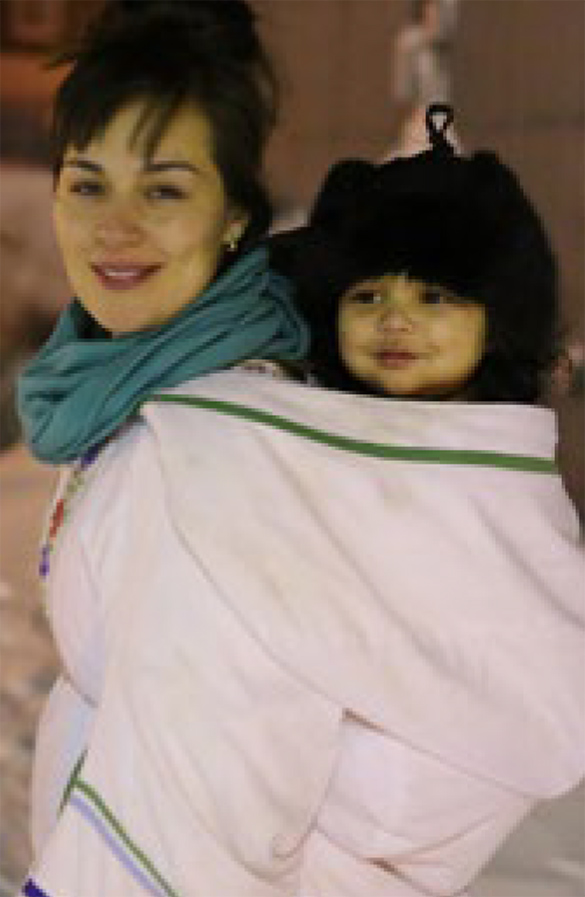
About the illustrator
Sweetest Kulu was illustrated by Alexandria Neonakis. Alexandria Neonakis is a Canadian artist from Nova Scotia. She now lives in Los Angeles, California, USA. One of the forms of art that she creates is illustrations for children’s books like Sweetest Kulu.
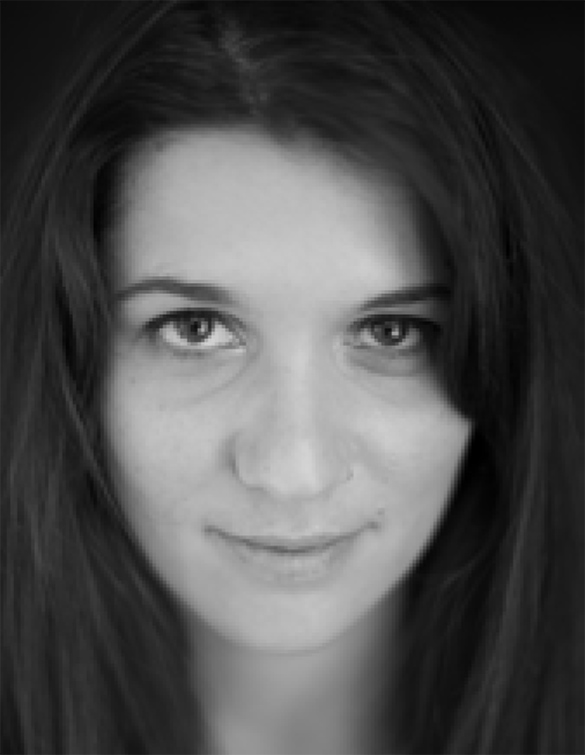
Illustrations
Explore the following illustrations from the storybook, Sweetest Kulu.
As you explore the illustrations, consider how the Alexandria Neonakis has used lines, shapes and colour.
Press the following tabs to access the definitions for lines, shapes, and colour.
 An element of design. The path left by a moving point, such
as a pencil
or a digital drawing tool. A mark that leads the audience’s attention in an artwork.
Changing the kind of lines can be used to suggest diverse ideas, shapes, or
emotions. For example, a horizontal line can feel calm.
An element of design. The path left by a moving point, such
as a pencil
or a digital drawing tool. A mark that leads the audience’s attention in an artwork.
Changing the kind of lines can be used to suggest diverse ideas, shapes, or
emotions. For example, a horizontal line can feel calm.

A shape is an element of design. A shape is a form that is enclosed or outlined. For example, when three lines meet they create the shape of a triangle. A shape has length and width. A shape can be created by line, value, colour and/or texture. Shape may be geometric or organic. Shapes may be positive or negative.

An element of design. In science, colour is a part of an object when light bounces off it. The four parts of colour are hue, value, intensity, and being warm or cool. Colours can be primary or secondary.
Press the following tabs to explore the illustrations.
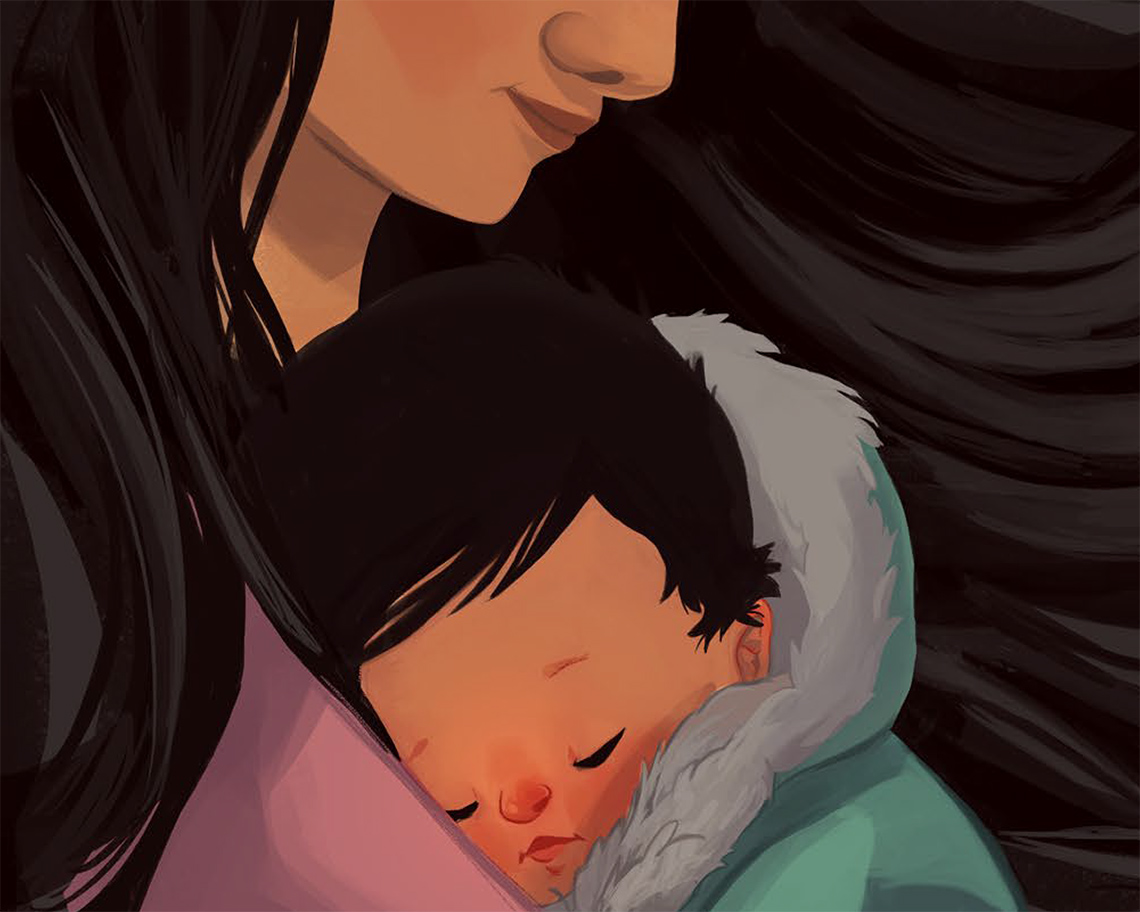
This is an illustration of a baby laying on their mom’s chest. There are warm colours that resemble their closeness to one another. There is a dark background with soft grey curvy lines.
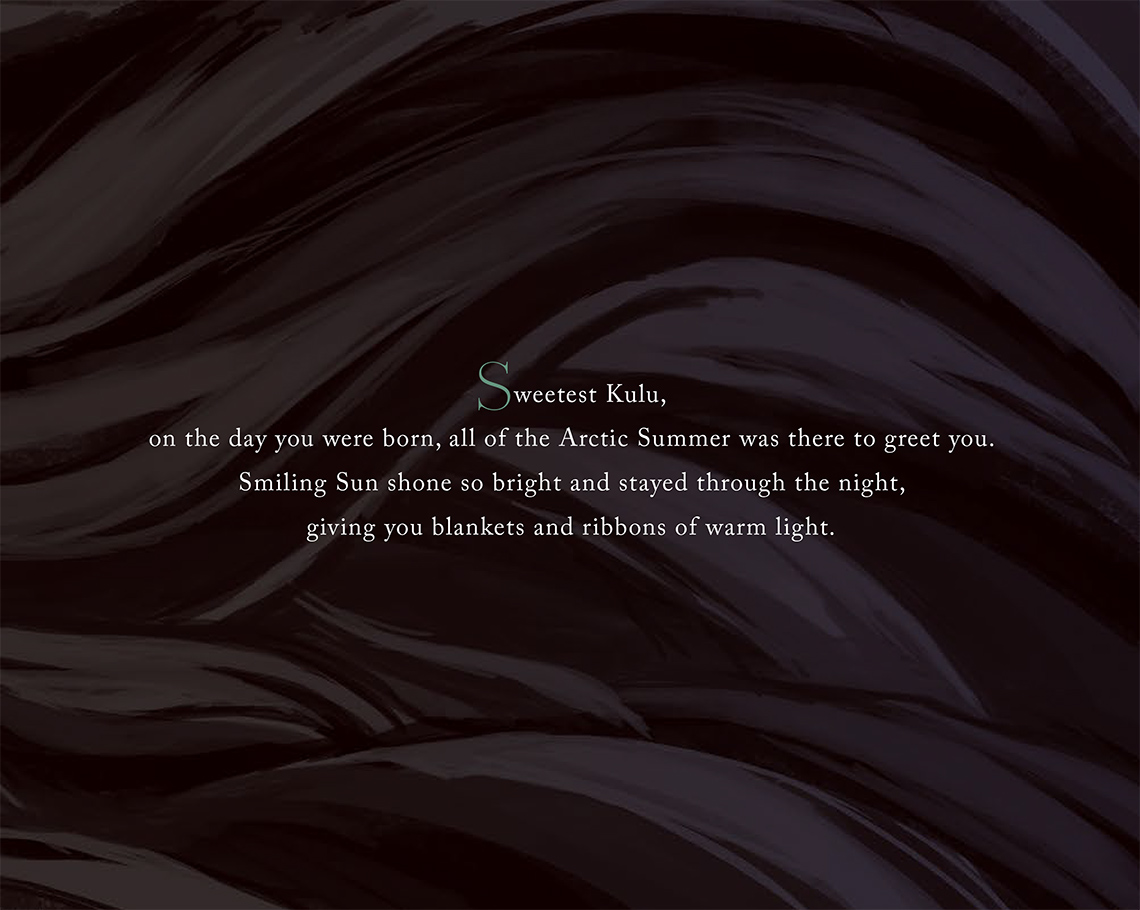
This illustration has a dark background with soft curvy grey lines that can resemble soft wind blowing.
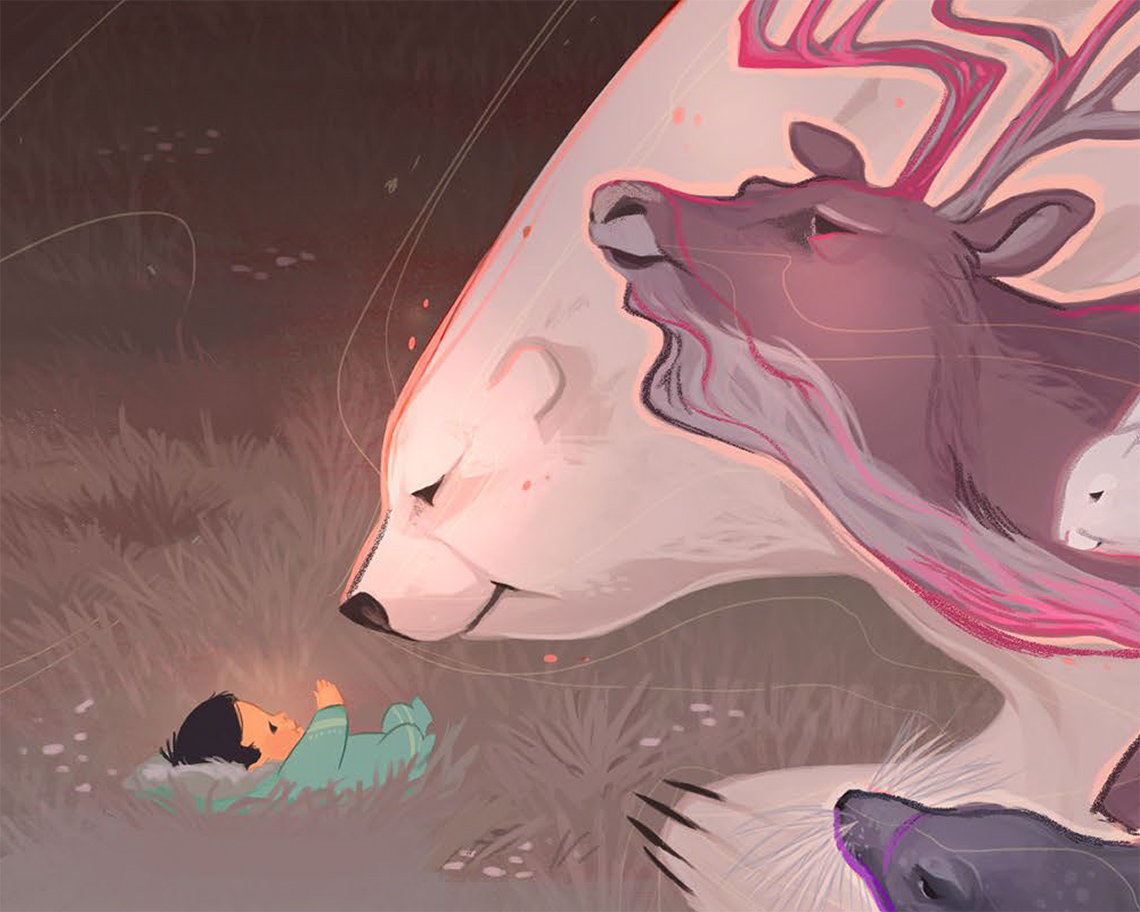
This illustration is of a baby laying in grass with several animals looking at them. There are many soft curvy lines used along with warm shades of colours such as brown, cream, and pink to outline the different animals.
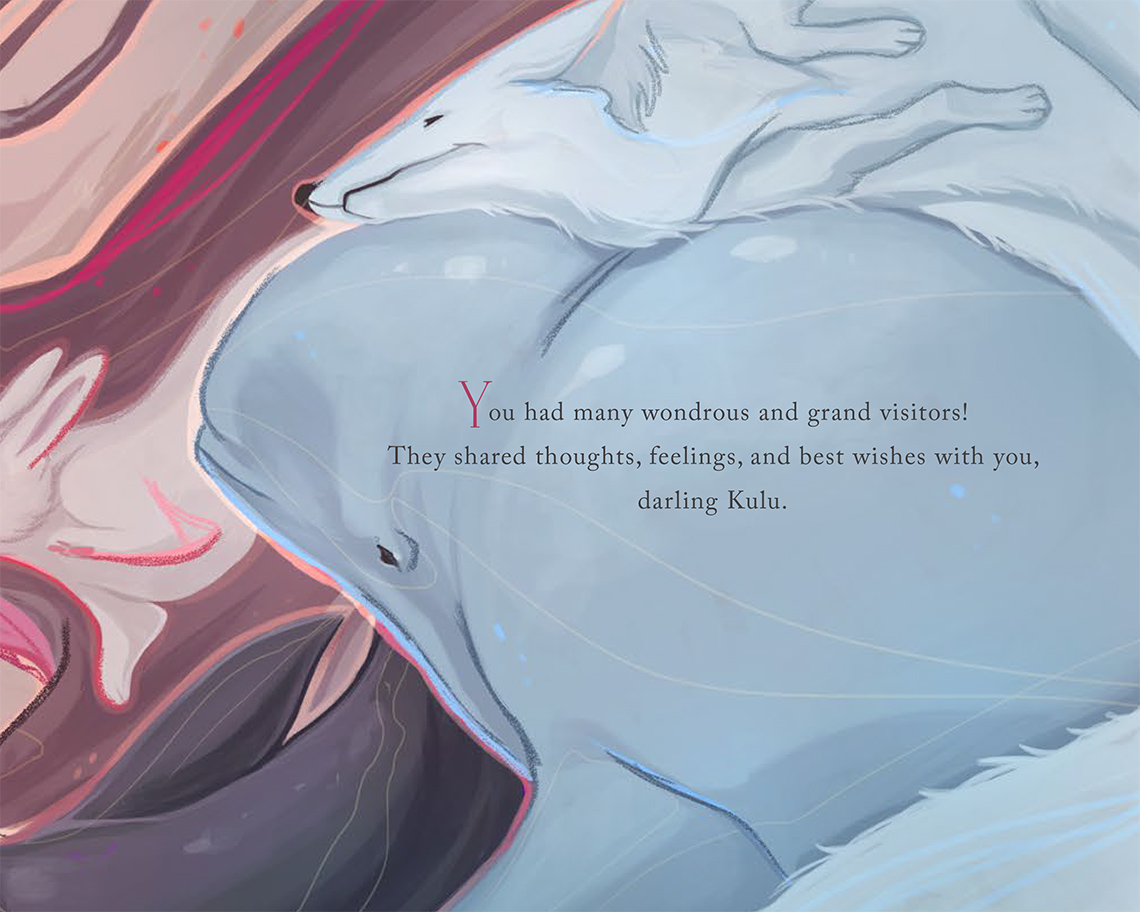
This illustration includes even more animals who have come to visit the baby. There are many soft curvy lines used along with warm shades of colours such as brown, cream, and pink and cool shades of blue and white that outline the different animals.
Let’s examine!
Let’s examine the first illustration.
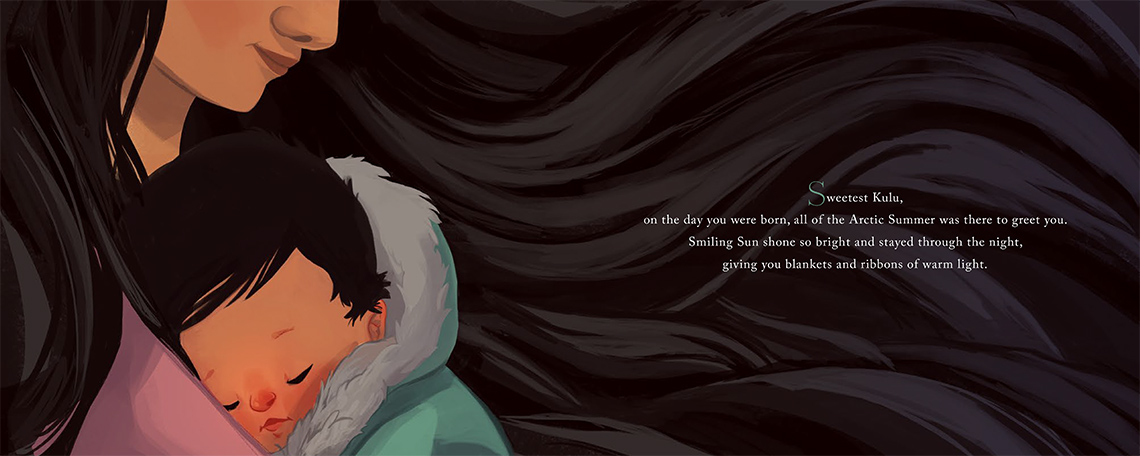
On the left side of the page there is an illustration of a baby laying on their mom’s chest. There are warm colours that resemble their closeness to one another. There is a dark background with soft grey curvy lines. On the right side of the page the same dark background continues with soft curvy grey lines that can resemble soft wind blowing. There is also text in the forefront on this page.
How does the use of lines, shape and/or colour create interest and help the audience stay engaged with this illustration?
Press ‘Let’s Check’ to reveal a possible answer.
I notice the curved lines in the hair of the adult. The curved lines of the hair might be shielding the baby to protect it. Also, in the first illustration, the warm colours of the baby’s skin might help to show that the baby is warm and comfortable.
How does this illustration make you feel?
Press ‘Let’s Check’ to reveal a possible answer.
This illustration gives me a feeling of protection and love.
Let’s examine the next illustration.
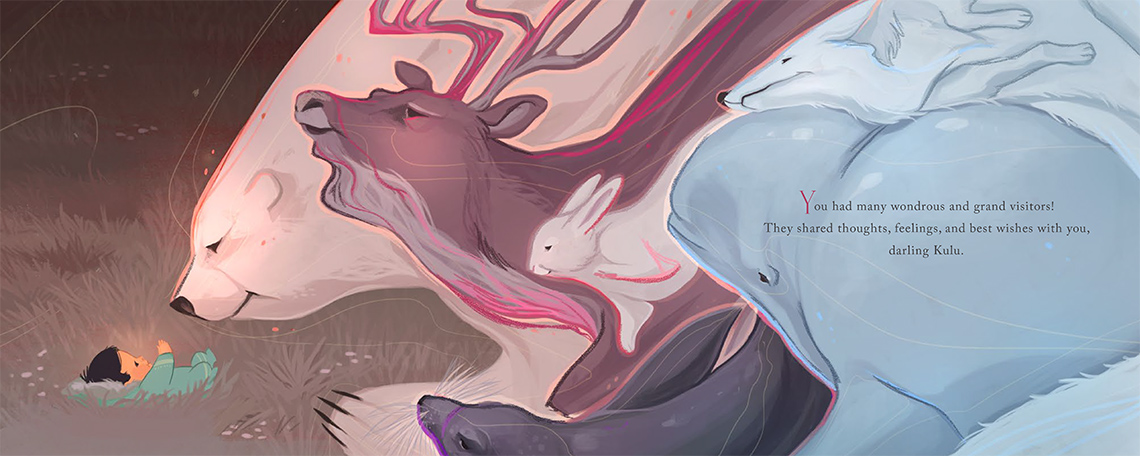
On the left side of the page there is an illustration of a baby laying in grass with several animals looking at them. On the right side of the page the illustration of the animals continues. There are many soft curvy lines used along with warm shades of colours such as brown, crème, and pink to outline the different animals.
How does the use of lines, shape and/or colour create interest and help the audience stay engaged in the story?
Press ‘Let’s Check’ to reveal a possible answer.
In the last two illustrations I notice the animals and the baby. The illustrator has used shapes that are asymmetrical for both the baby and the animals. The illustrator chose to put the animals close to the baby, looking down at it which might mean they care and want to protect the baby.
How do these two illustrations make you feel?
Press ‘Let’s Check’ to reveal a possible answer
These two illustrations might make me feel calm and cared for.
What’s My Superpower?
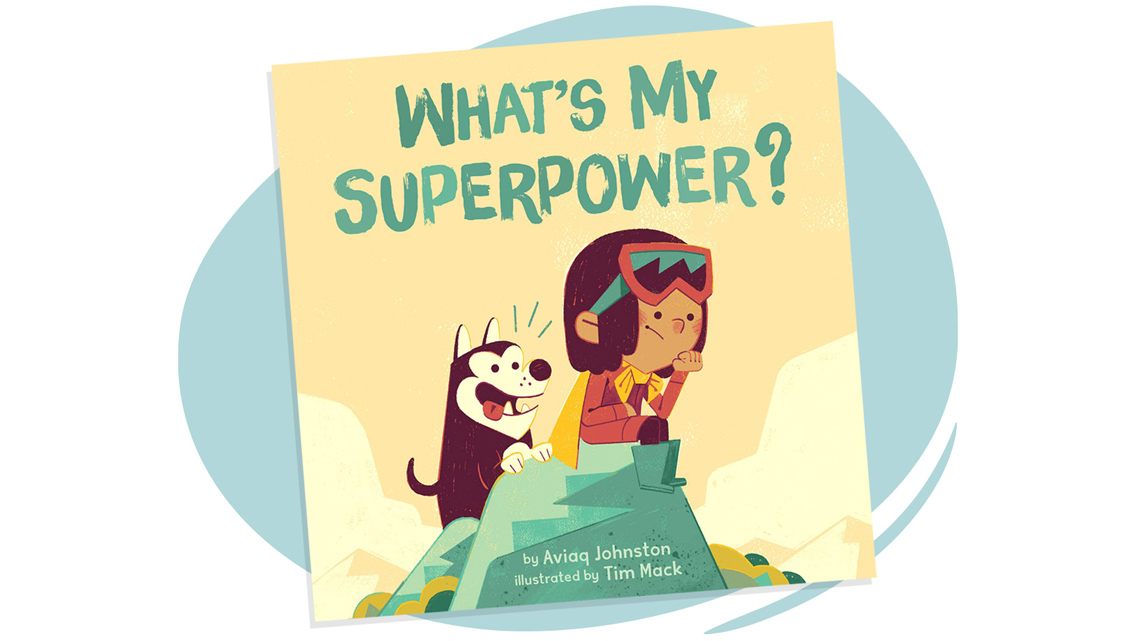
Next, let's explore the illustrations from a storybook called What’s My Superpower?
This story is about a child named Nalvana. All of her friends seem to have a superpower except her. Nalvana is trying to figure out what her superpower is, and her mother helps Nalvana understand that her superpower is her kindness towards others.
About the author

What’s My Superpower? was written by Aviaq Johnston. Aviaq Johnston is an Inuk author from Igloolik, Nunavut. She loves reading, writing and studying. Aviaq won two awards for a short story she wrote called, ‘Tarnikuluk’ in 2014. She enjoys traveling and spends her time living between Iqaluit and Ottawa.
About the illustrator
What’s My Superpower? was illustrated by Tim Mack. Tim Mack is an illustrator from Vancouver, British Columbia. He has illustrated several books including What’s My Superpower? He enjoys drawing and using colours and shapes in his artwork.

Let’s explore!
Explore the following illustrations from the storybook, What’s My Superpower?
As you explore the illustrations, think about the variety of art elements that you notice.
For example, you might think about the use of different lines, shapes and colours that the illustrator uses.
Press the following tabs to explore the illustrations.
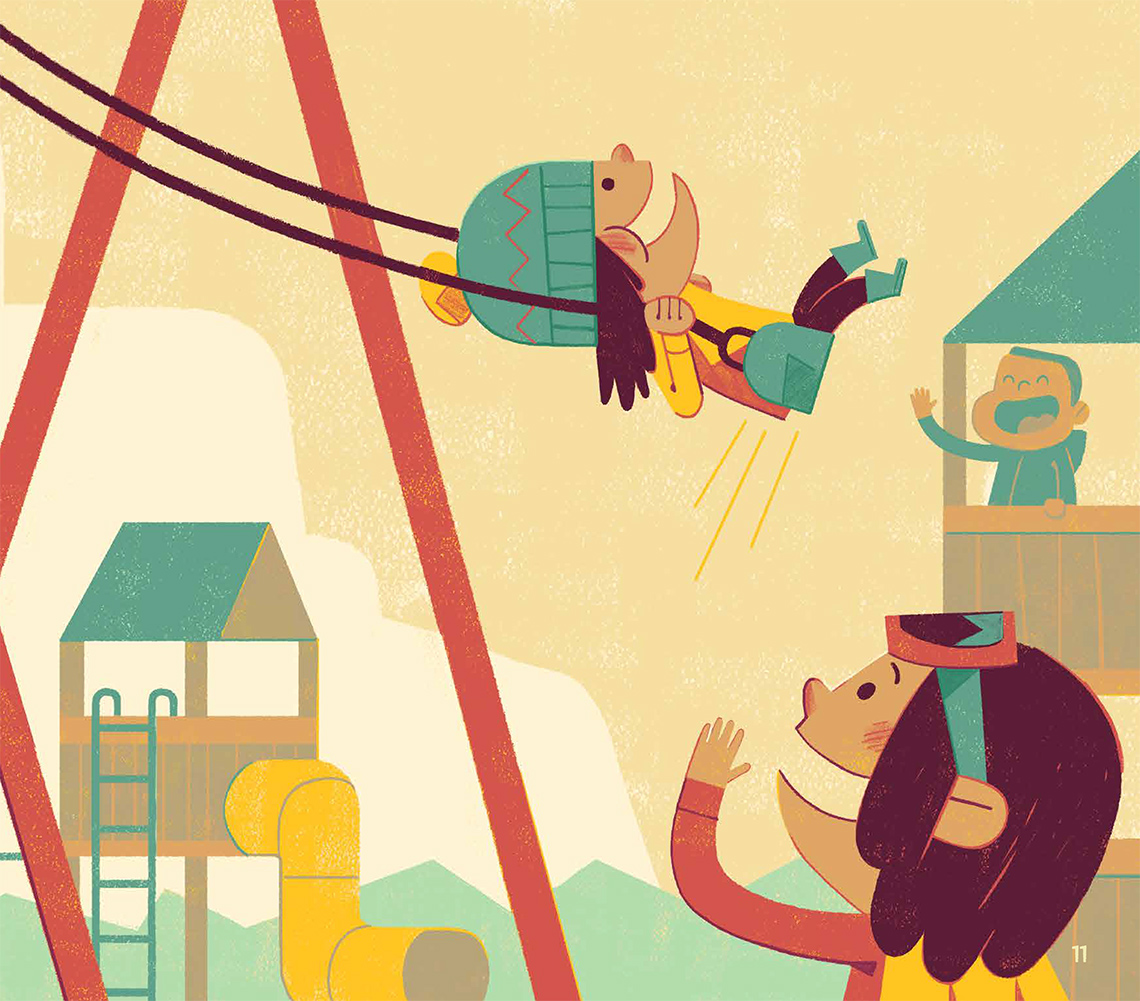
This is an illustration of a child on a swing while another child watches. There are two lines on the swing that move in an upward direction. There are many other straight and curved lines that illustrate the location of where the children are. The colours used include brown, green, yellow, orange for the cape and white.

This is an illustration of a child on a hill. There is a curved line that moves in an upward direction towards where the child is. There are other curved lines that outline different animals and a shelter. The background of this illustration uses shades of blue and white.
Let’s examine the first illustration.
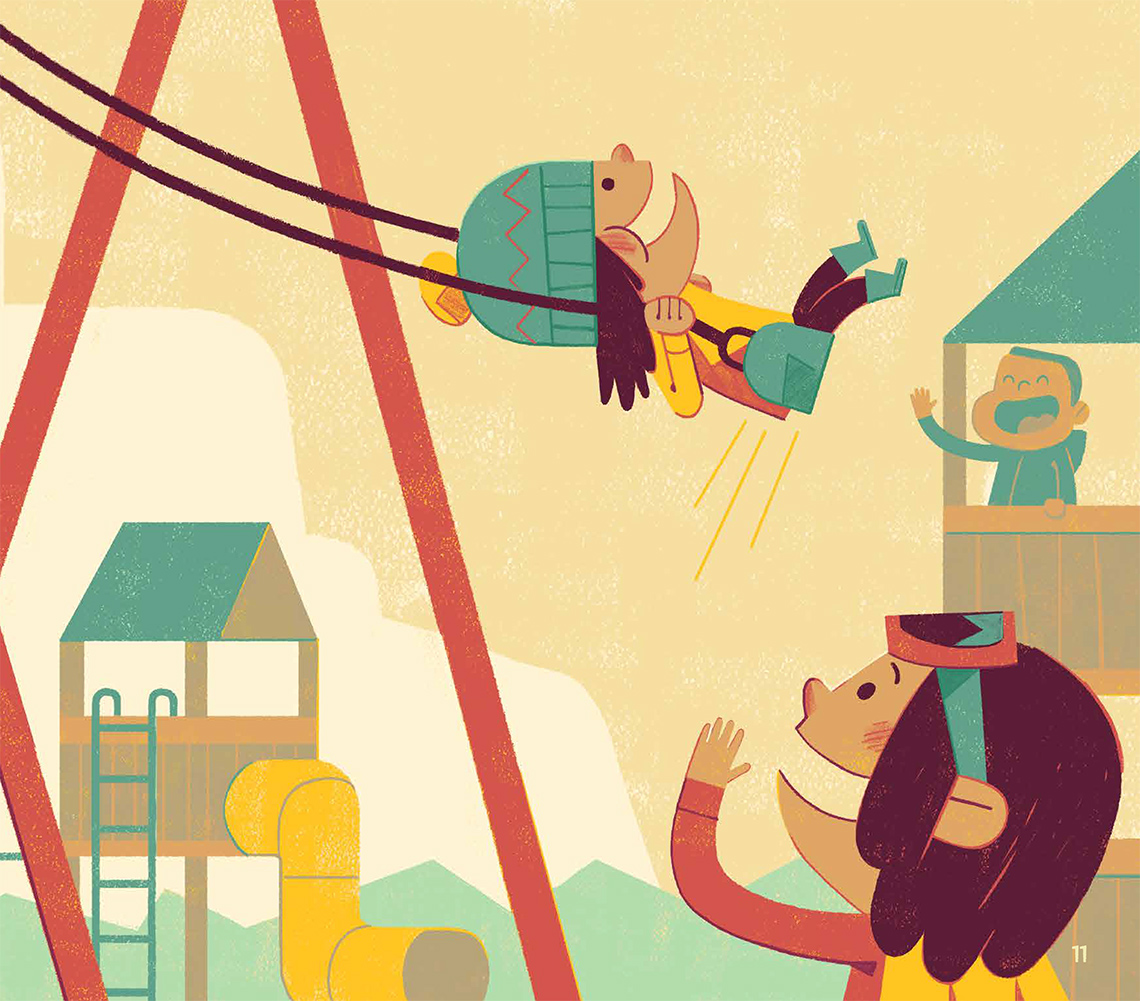
This is an illustration of a child on a swing while another child watches. There are two lines on the swing that move in an upward direction. There are many other straight and curved lines that illustrate the location of where the children are. The colours used include brown, green, yellow, orange for the cape and white.
How does the use of lines, shape and/or colour create interest and help the audience stay focused on this illustration?
Press ‘Let’s Check’ to reveal a possible answer.
The illustrator uses line to help show that the swing is moving using three lines behind the swing. The illustrator uses lighter shades of colour for the background and darker shades of colour for the foreground.
How does this illustration make you feel?
Press ‘Let’s Check’ to reveal a possible answer.
This illustration might make you feel excited to swing so high!
Let’s examine the second illustration more closely.
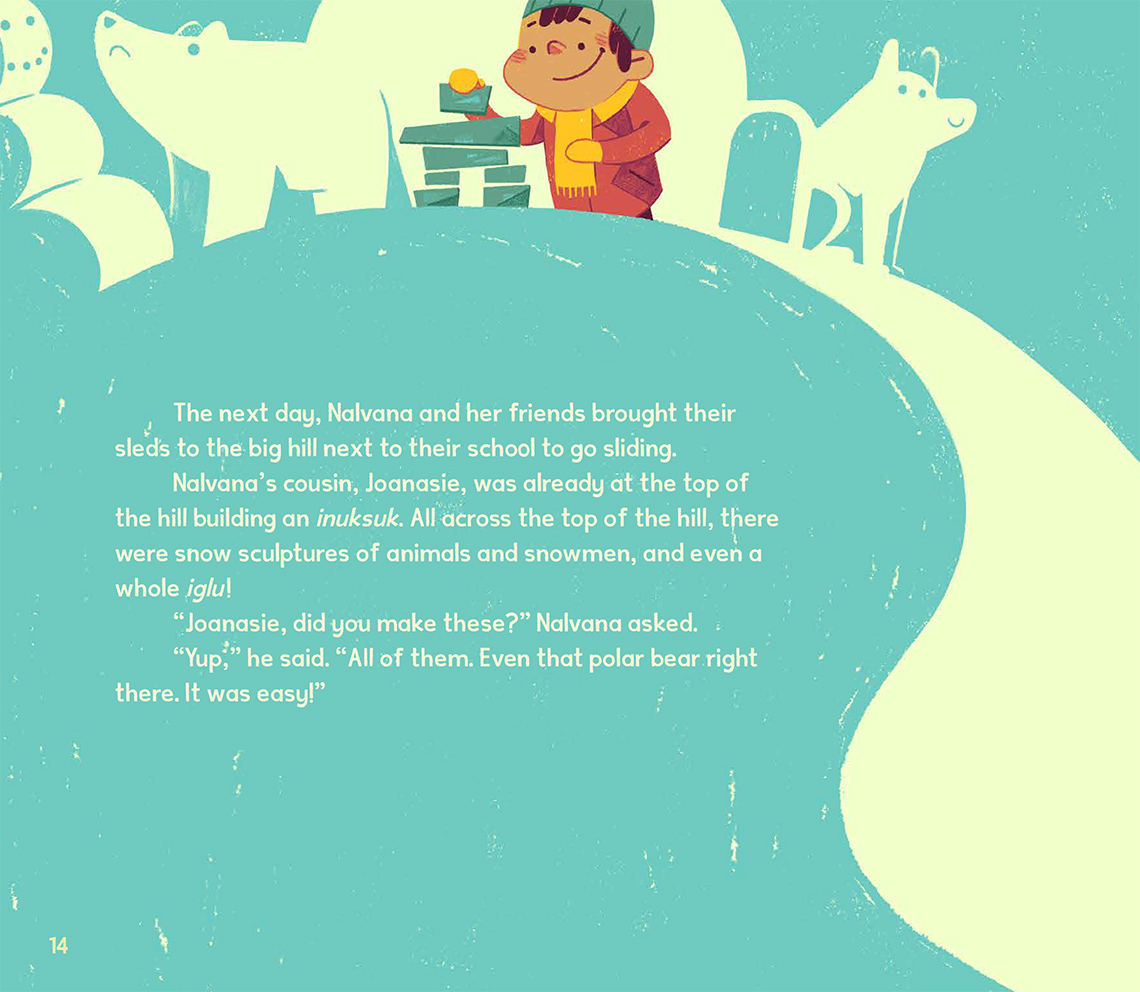
This is an illustration of a child on a hill. There is a curved line that moves in an upward direction towards where the child is. There are other curved lines that outline different animals and a shelter. The background of this illustration uses shades of blue and white.
How does the use of lines, shape and/or colour create interest and help the audience stay focused on this illustration?
Press ‘Let’s Check’ to reveal a possible answer.
In this illustration we notice the asymmetrical shapes that the illustrator used for the animal snow sculptures. The illustrator used curved lines to outline the path of snow flowing down the hill. Colour was used to contrast the snow animals with the character. White was the only colour used for the snow animals. The character at the top of the hill has been created using many colours. This informs the audience that this character is not a sculpture.
How does this illustration make you feel?
Press ‘Let’s Check’ to reveal a possible answer.
This illustration might make you feel happy and creative.
Go!
Now that you have explored the illustrations from the storybooks Sweetest Kulu and What’s My Superpower? Let’s compare the illustrators’ styles by comparing an example from each.
Explore the following two illustrations and answer the following questions. You may record your responses using a method of your choice.
What did the illustrator choose to include on each page?
What is similar about the two illustrations?
What is different about the two illustrations?
How does each image make you feel?
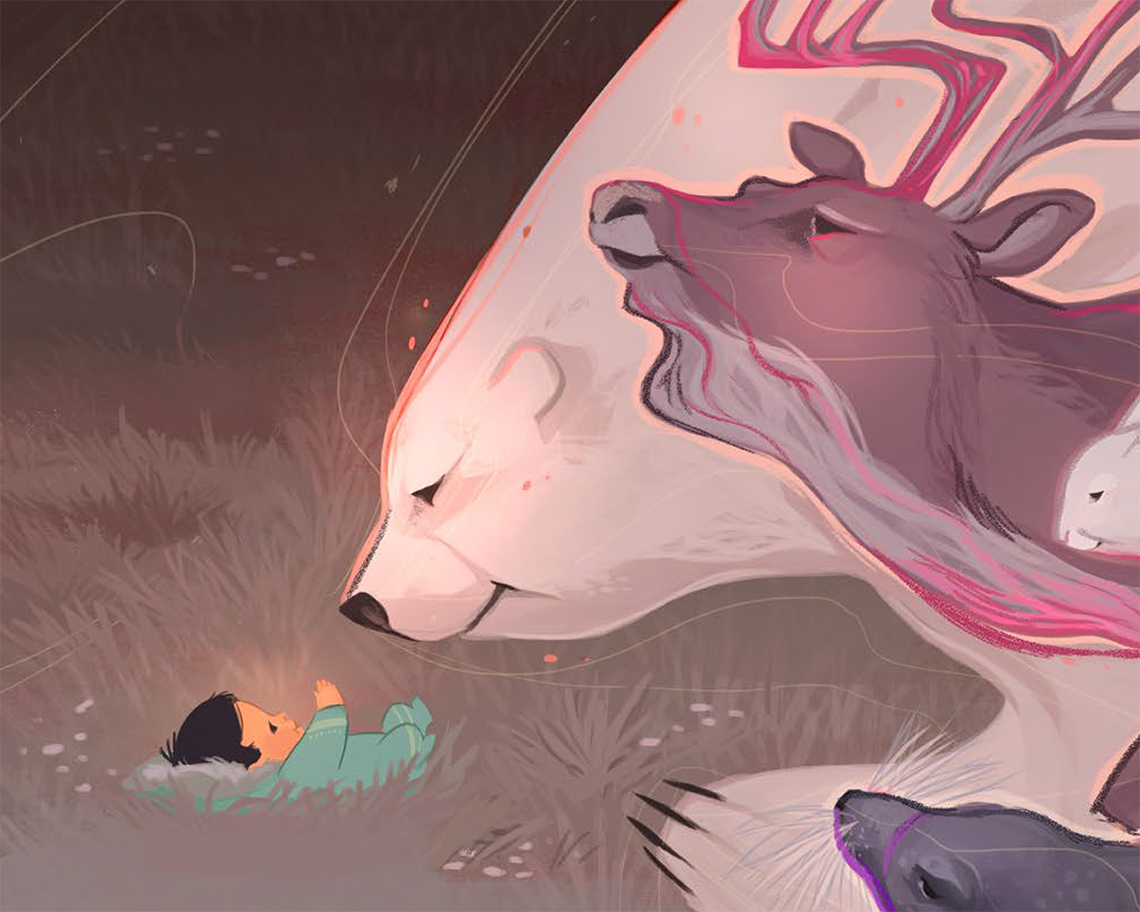
This illustration is of a baby laying in grass with several animals looking at them. There are many soft curvy lines used along with warm shades of colours such as brown, crème, and pink to outline the different animals.
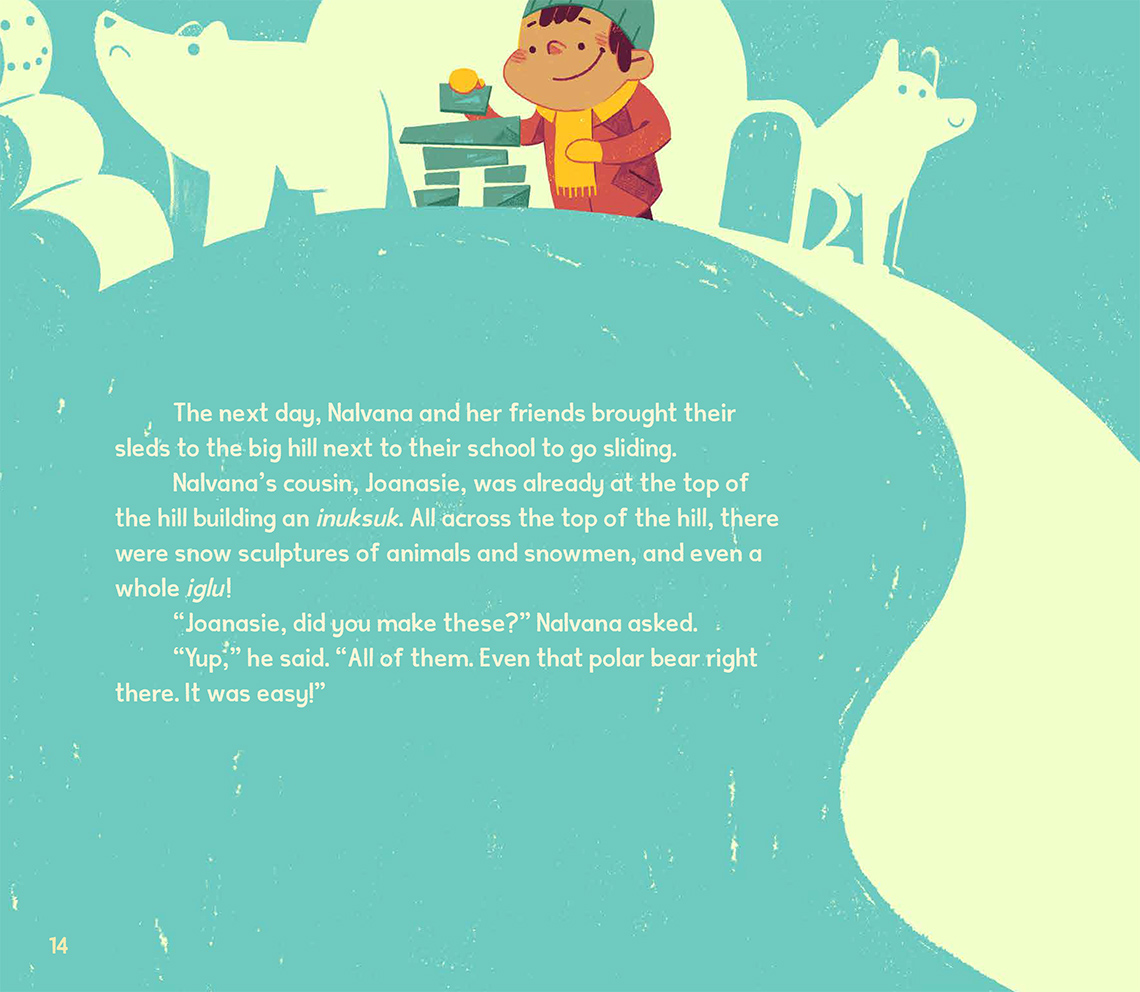
This is an illustration of a child on a hill. There is a curved line that moves in an upward direction towards where the child is. There are other curved lines that outline different animals and a shelter. The background of this illustration uses shades of blue and white.
Consolidation
Putting it all together
Portfolio
Reflection
Why are illustrations important to telling a story?

Consider other stories you have experienced. What was specific about the style of the illustrations? (i.e. Did the illustrator use a lot of colours, a few or none? Did they use a variety of shapes? Did they use different types of lines?)
If you could create an illustration for a part of your favourite story, what would you include in your illustration?
Reflection
How do you feel about what you have learned in this activity? Which of the next four sentences best matches how you are feeling about your learning? Press the button that is beside this sentence.
I feel…
Now, record your ideas about your feelings using a voice recorder, speech-to-text, or writing tool.
